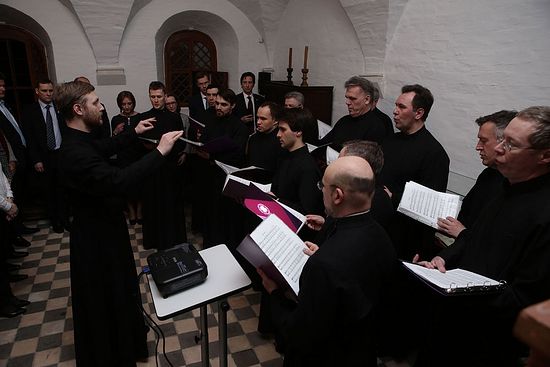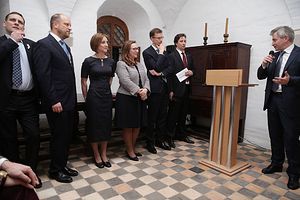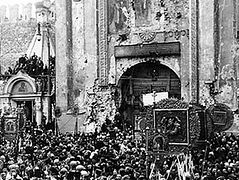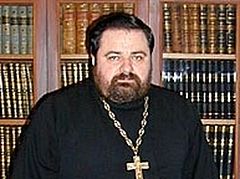Source: The Russian Orthodox Church Outside of Russia
April 20, 2016
The opening of a foundation, the White Movement Under the Protection of the Kursk-Root Icon of the Mother of God opened on April 14, 2016, in the premises of the Old English Court in Moscow. An organization called “White Legacy” of the Society of the Descendants of the Russians of Gallipoli was announced, which will open in 2017, headquartered in the North Tower of Novospassky Stavropighial Men’s Monastery.
The presentation was supported by the Moscow City Department of Culture; The Museum of Moscow; the Union of Descendants of the Russians of Gallipoli and Novospassky Monastery. EcoStandard Group also provided support.
Present were Moscow Government Minister Alexander Kibovsky; Alina Saprykina, Director of Museum of Moscow; His Grace Bishop Savva of Voskresensk, Prior of Novospassky Monastery; Alexei Grigoriev, Head of the UDRG; Paul Edward Kulikovsky of the House of Romanovs (great-grandson of Grand Duchess Olga Alexandrovna, daughter of Tsar Alexander III), as well as delegates from Russia, France, England, Australia, the USA and other countries, among them historians, journalists and cultural figures.
The main goal of the new organization will be to memorialize the heroes of the White Movement and the popularization of its ideals in today’s Russia.
“The Ministry of Culture of Moscow has already achieved success working with the UDRG when we reinterred the remains of Grand Duke Nikolai Nikolaevich (the Younger) last year,” said Mr Kibovsky. “It is symbolic that today’s gathering is taking place in the premises of the Old English Court, a unique architectural monument with great historic significance. The building was reopened this year following renovation, and we plan for it to be a forum for dialog with the Russian diaspora.
“We wish to discuss the White Movement, to explain and help understand the feats of its participants, to disseminate information on the ways of life in various places of the Russian Army in Gallipoli, Lemnos, Bizert and other locations, and about the life of Russian refugees abroad,” said Mr Grigoriev. “Our goal is to display the power of faith and morality of the White warriors, as well as the role and meaning of the Russian Orthodox Church in preserving the spirit and national consciousness of Russian communities abroad.”
“It is a great joy for us to receive this organization within our walls,” noted Bishop Savva. “It is profoundly symbolic that this entity will be headquartered within our walls, which since the 16 th century was the burial place of the Romanov boyars.”
Nikolai Spassky, Secretary of the Moscow branch of the UDRG, then gave a brief speech.
The Head of the UDRG in the USA, Pavel Kuzubov, then divulged the plans of the effort, which will include a multimedia center, lecture series, seminars, documentary screenings, as well as active dialog relating to the White Movement. According to him, the center will cover contributions to the study of the Fatherland; culture and military topics; eminent figures of the White Movement even before the outbreak of the Russian Civil War; how members of every social class of Russia united to fight under the White banner; as well as the tragic exodus of the Russian Army from Russia and their forced presence in Gallipoli, Lemnos, Bizert and other regions. These Russians did not simply scatter as huddled masses of refugees, but, preserving their own internal structures, found the strength to carry on the lofty ideals of Russian culture. Equally important will be exhibiting the ways of life of Russian refugees in the diaspora and the efforts of the legendary Society of Gallipoli. Special attention will be paid to the return of the descendants of White Russians to Russia.
The architectural layout of the center in Novospassky Tower was presented by Kleinwelt Architekten’s Nikolai Pereslegin.
Novospassky Men’s Choir opened and closed the event with the singing of the Lord’s Prayer, composed by Nikolai Kedrov in 1922 while in the emigration, as well as the Song of the Society of Gallipoli, the Alexeev Regiment March and other songs.





